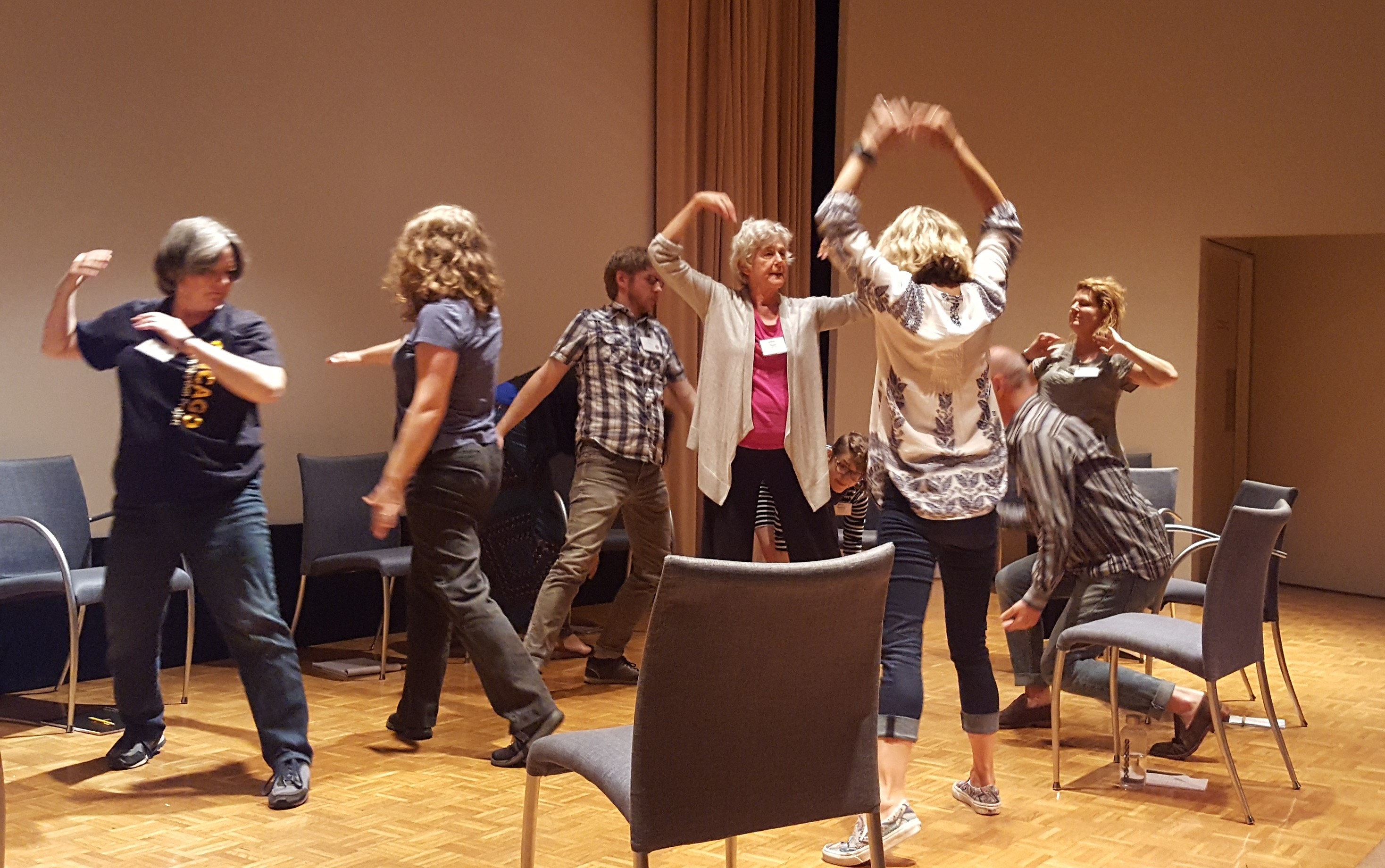A Closer Look at the Work of the Teaching Artist

During a panel discussion facilitated by Lynda Monik-Isenberg, trainees heard from experienced teaching artists including; Thern Anderson and Mary Moore Easter (Movement at TU Dance); Dr. Louis Porter II (Memoir at Walker Methodist); Matt Abernathy (Music/Choir at Minnesota Opera); Dane Stauffer (Theatre at Park Square Theatre); and Masanari Kawahara (Mask Making at Pillsbury House and Theatre). Isenberg, posed series of questions focused on pursuing employment opportunities, the challenges teaching artists face when working in community settings, and how to overcome them.
Matt Abernathy’s work spans from children to older adults and avocational to professional. He shared his experience as a conductor for Voice of Opera: “They want so badly to learn these things,” said Matt. “They have so much life experience too. They have a lot of background knowledge that they can draw from to make quicker connections than the K-12 kids I work with. They have seen operas, they have been to an orchestra, they have listened to the radio, they have read lots of stories and they see the parallels between the scene we are doing and their lives. They draw these connections very quickly and acutely, so that we can go quite deep into the music.” “I think no matter what the medium is, you give someone an opportunity to think of themselves as an artist and to look at the world as an artist, and step outside of self concepts that have gone unquestioned,” added Dane Stauffer. “I’ve had students walk in and say, ‘You know the idea of playing? I thought I forgot how to play.’”
Invigorating, engaging, creative and fun!

“One thing I really appreciated about the workshop was how they modeled good teaching practices,” added Lauren Karle. “From things like posting the goals in the classroom, having a parking lot for questions, having a resources poster, to using microphones and having good lighting — all of the things that can easily go overlooked. I felt like they modeled very well how they want us to be teaching and what we should be learning.”
“The training was invigorating, engaging, creative and fun!” Annie concluded. “It was delightful to work with the Minnesota teaching artists and I was inspired by their curiosity, and their eagerness to learn and collaborate with one another.”
This training was a huge building block for the teaching artist trainees, but also for me. It was an eye-opening experience to see how much these seasoned and emerging artists absorbed in just two days. I now understand much more about how important these trainings are for teaching artists from all backgrounds and levels of practice. The skills that they mastered should never be underestimated. The teaching artists left this training feeling more confident, enlightened and inspired to take the next (or first) leap into creative aging programming. I was grateful to bear witness.
*Photo credit: Jacqueline DuMont, unless otherwise noted.
*See also Minnesota: Teaching Artist Training in Creative Aging by National Assembly of State Arts Agencies (NASAA).


